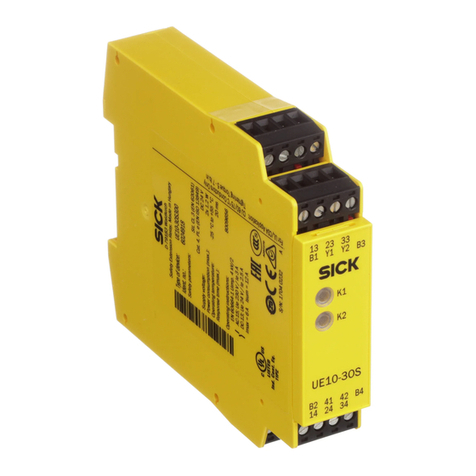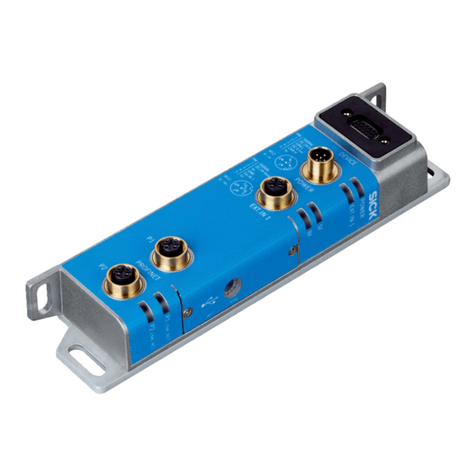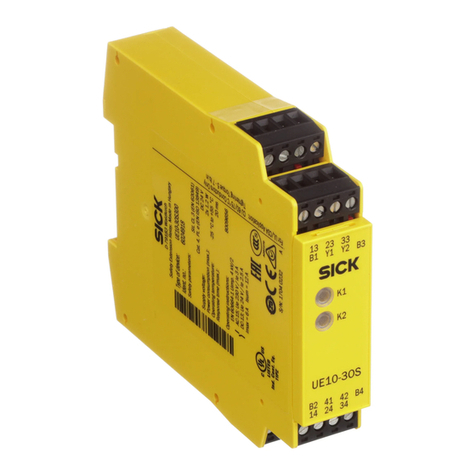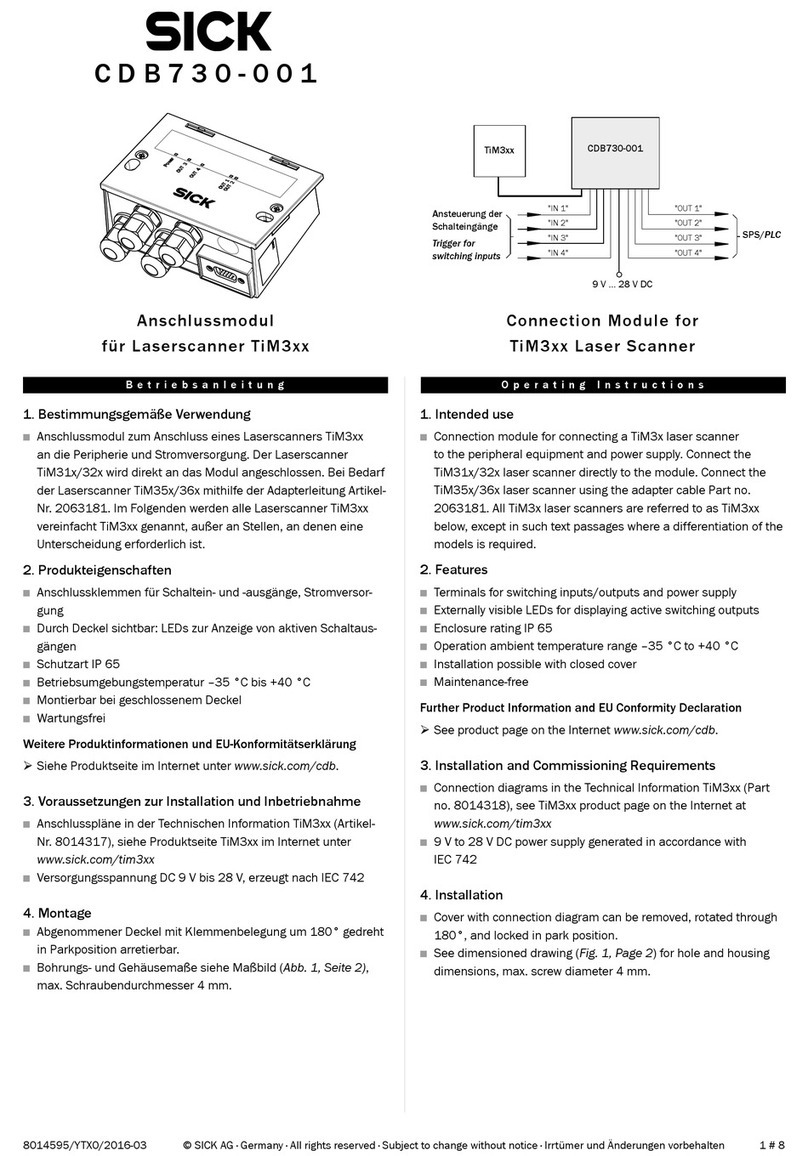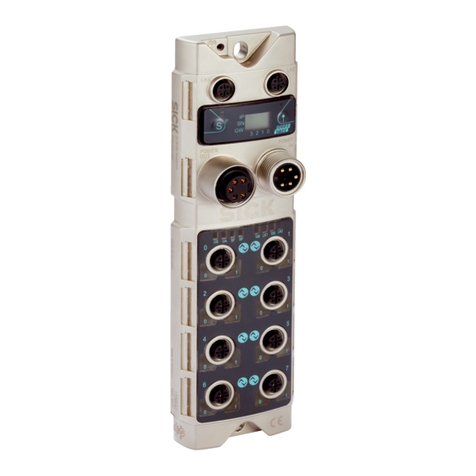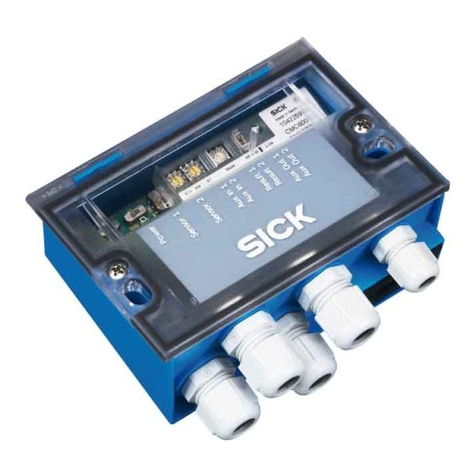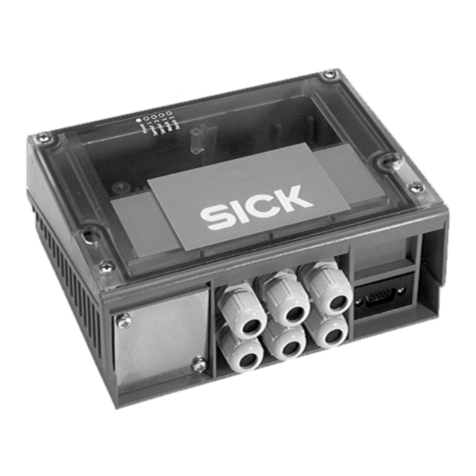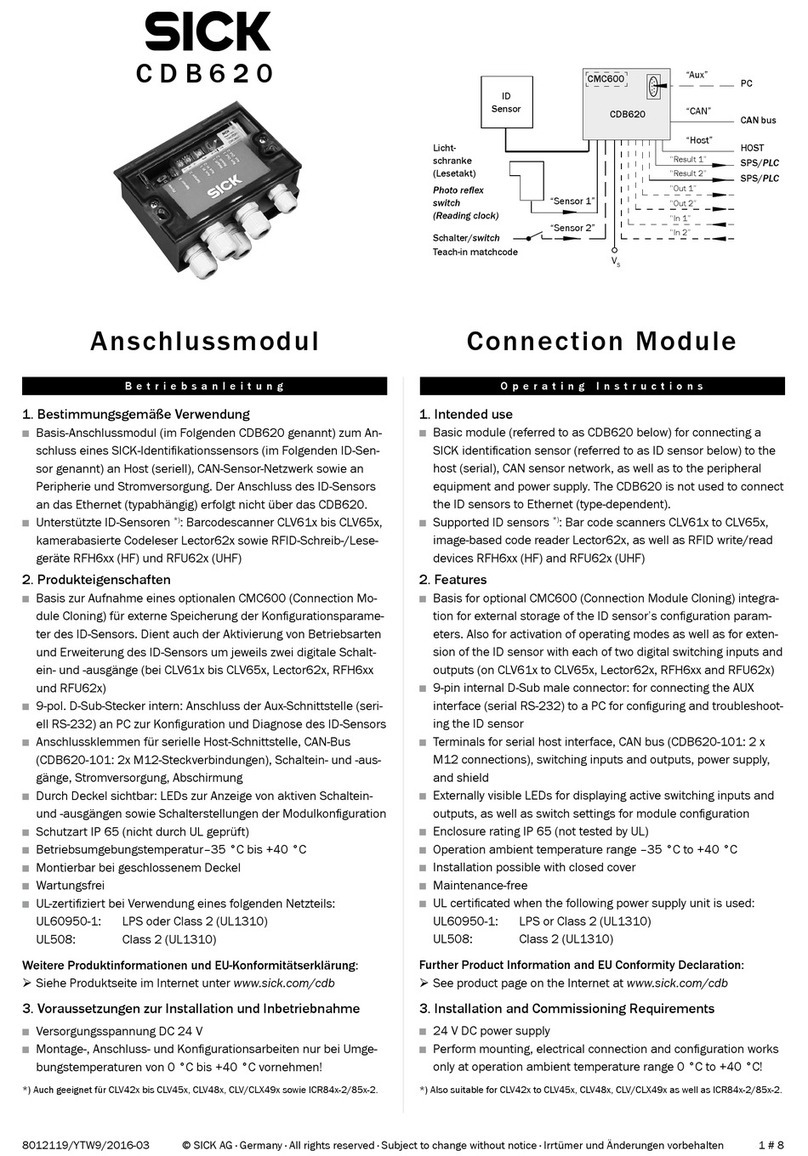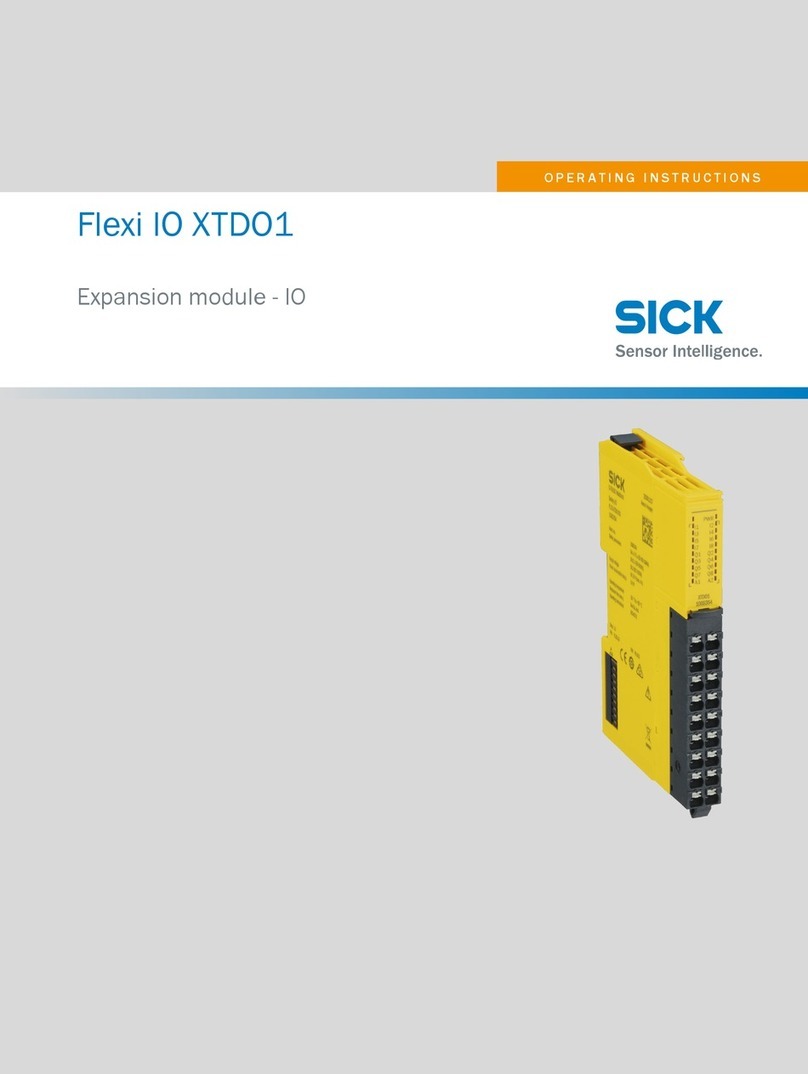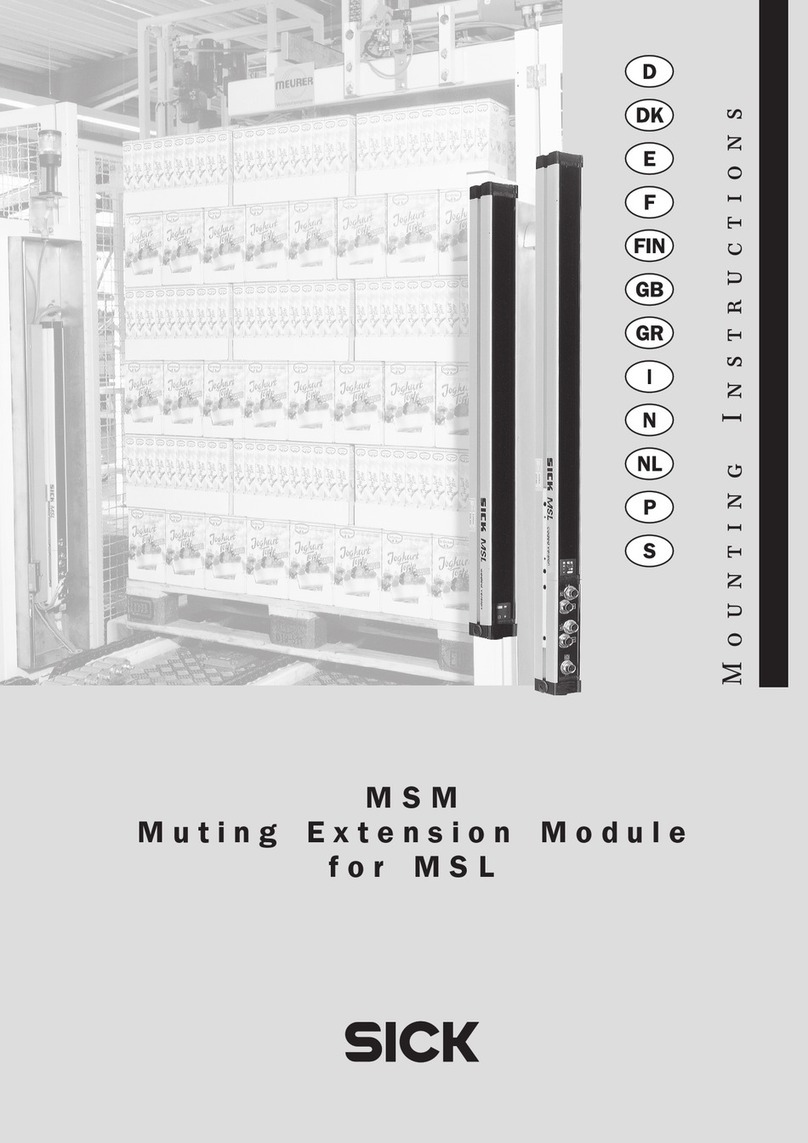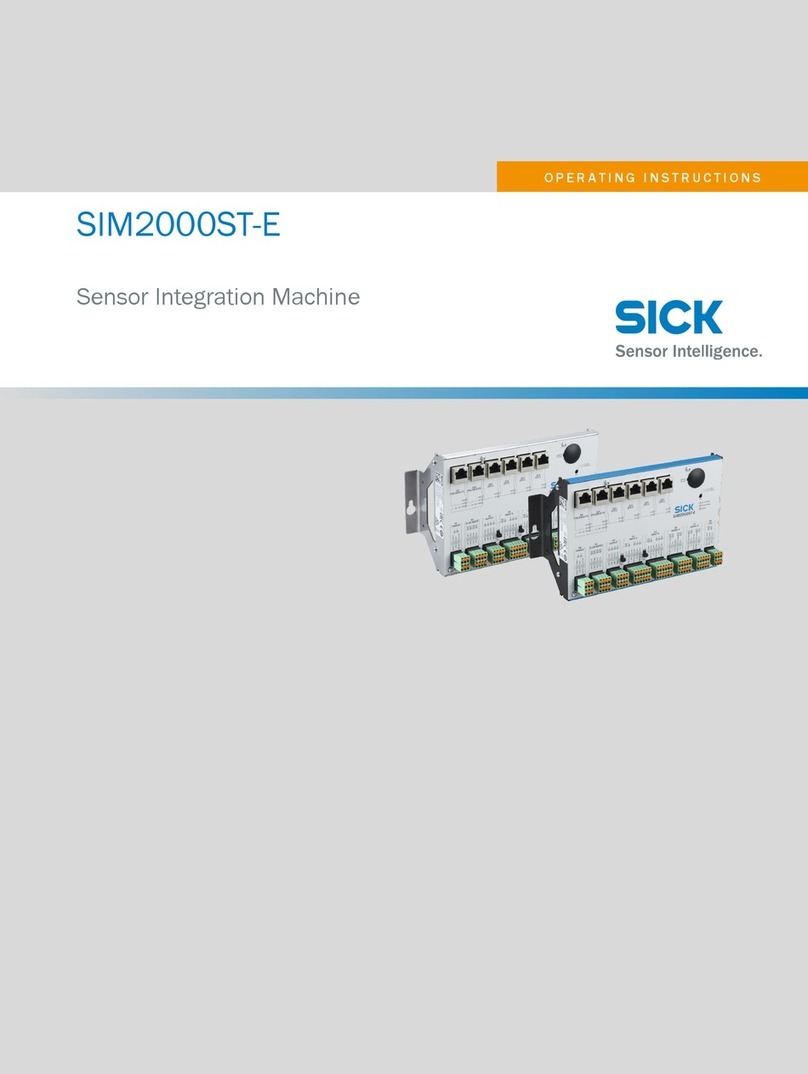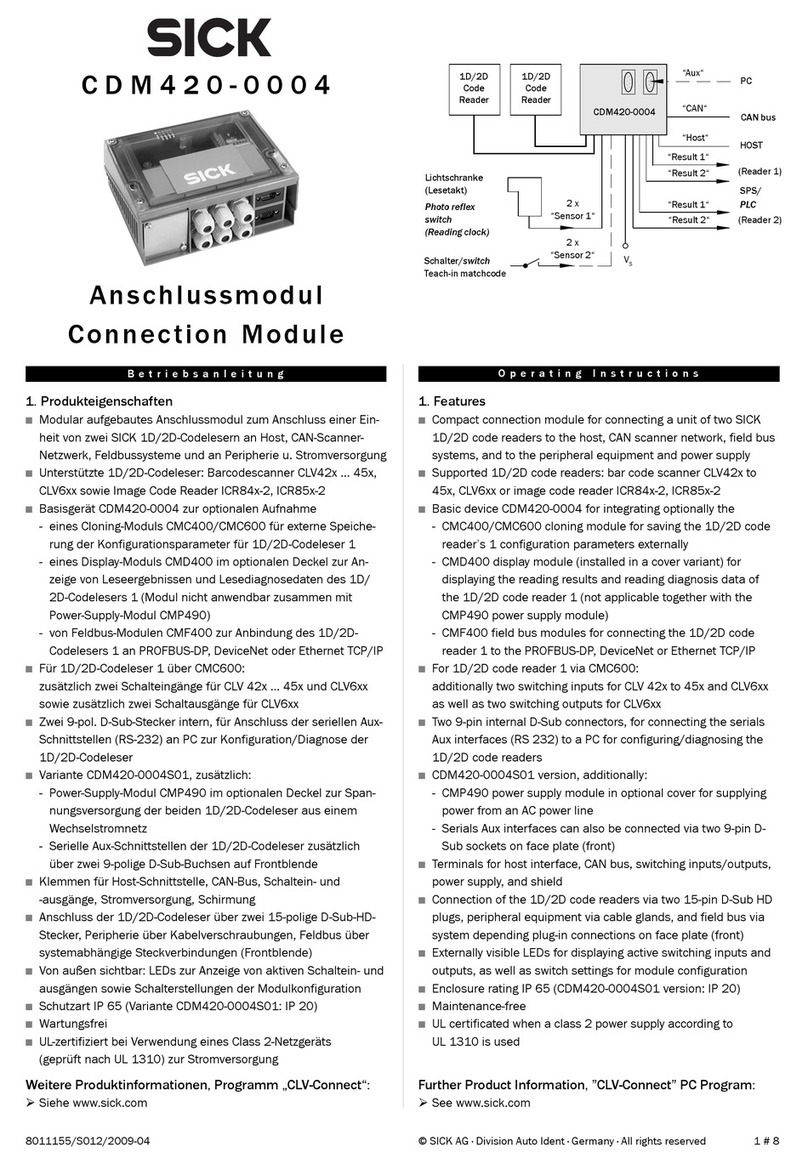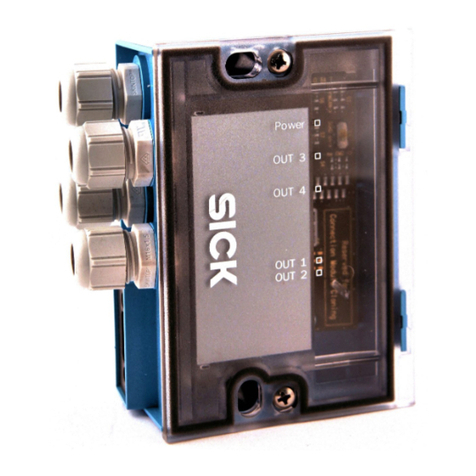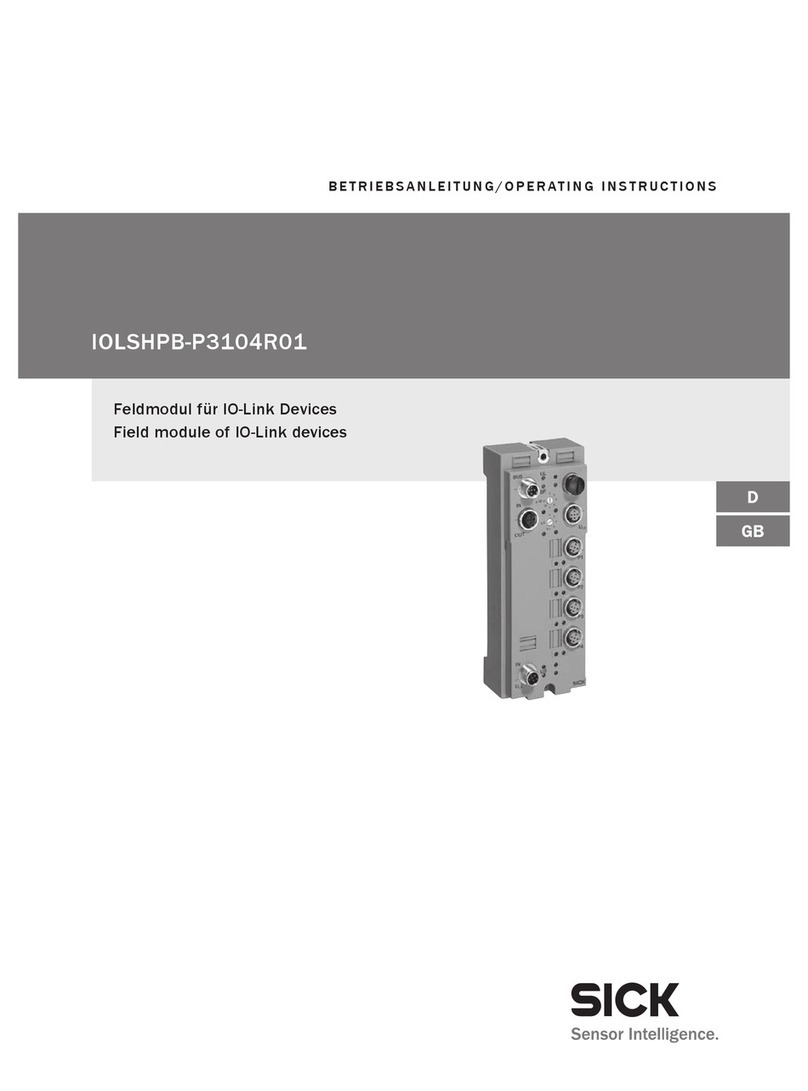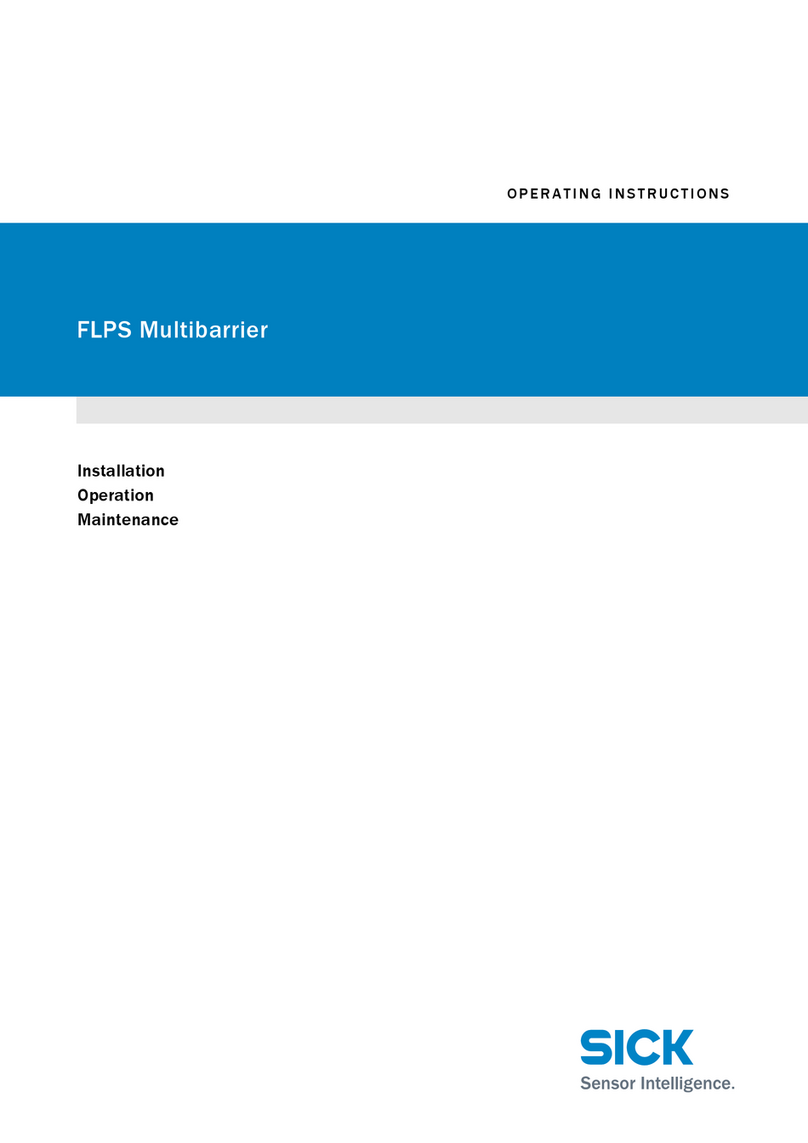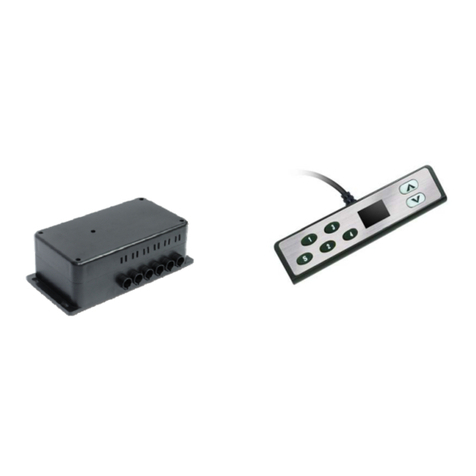
1 # 48013110/UC97/2010-06 © SICK AG · Germany · All rights reserved · Subject to change without notice · Irrtümer und Änderungen vorbehalten
1. Produkteigenschaften
■Schnittstellenwandler-Modul zur Anbindung eines SICK 1D/2D-
Scanners an eine Datenschnittstelle in CL20-mA-Ausführung
■Einsetzbar im Anschlussmodul CDM420-0001
■Unterstützt die Barcodescanner der Produktfamilien CLV4xx und
CLV6xx sowie die 1D/2D-Image Code Reader der Produktfamilien
ICR84x-2 und ICR85x-2
■Wandelt die RS-422-Ausführung der seriellen Host-Schnittstelle
des Scanners in eine CL20-mA-Schnittstelle
■Ausprägung der Schnittstelle (Stromquelle/Stromsenke) für
Sender und Empfänger auf den Kommunikationspartner (Host)
einstellbar
■Versorgungsspannung DC 24 V ± 20 % über das Anschlussmodul
2. Voraussetzungen zur Installation
■Anschlussmodul CDM420-0001 mit Betriebsanleitung
Nr. 8010004
■PC mit Konfigurationssoftware CLV-Setup bzw. SOPAS-ET
(CLV6xx) zum Aktivieren der RS-422-Schnittstelle im Scanner
■RS-232-Datenleitung (3-adrig, Nullmodem) zum Anschluss des
PC an den Stecker AUX im Anschlussmodul
3. Elektrische Installation
■Elektroinstallation nur durch Fachpersonal durchführen.
■Elektrische Verbindungen nur im spannungsfreien Zustand
herstellen oder lösen.
Schnittstellenwandler RS-422/CL20mA
für Anschlussmodul CDM420-0001
Montageanleitung Fitting Instructions
RS 422 to CL20mA interface converter
for CDM420-0001 Connection Module
HINWEIS
Beschädigungsgefahr durch elektrostatische Aufladung!
Vor Entnahme des Schnittstellenmoduls aus dem ESD-Beutel
Potenzialausgleich zwischen Körper, Arbeitsunterlage, An-
schlussmodul und Werkzeug durchführen.
Während des Einbaus ein Erdungsarmband am Handgelenk
tragen.
1. Sicherstellen, dass die zuführende Versorgungspannung
(DC 24 V oder AC 230 V bei Verwendung des Power-Supply-
Moduls CMP400) für das Anschlussmodul ausgeschaltet ist.
DIe Verwendung nur des Schalters S1 im Anschlussmodul ist
nicht ausreichend!
1. Features
■Interface converter module for connecting a SICK 1D/2D
scanner to a CL20 mA data interface
■Applicable in the CDM420-0001 Connection Module
■Supported devices: bar code scanners of the CLV4xx and CLV6xx
families as well as the 1D/2D Image Code Readers of the
ICR84x-2 and ICR85x-2 families
■Converts the RS 422 type of the scanner’s serial host interface
to a CL20 mA type
■Characteristics of the interface (current source/current sink) for
each the transmitter and receiver adaptable to the host
■Power supply 24 V DC ± 20 % via connection module
2. Installation Requirements
■CDM420-0001 Connection Module with operating instructions
no. 8010004
■PC with configuration software CLV-Setup respectively SOPAS-ET
(CLV6xx) for enabling the RS 422 interface in the scanner
■RS 232 data cable (3-core, null modem) for connecting the PC to
the AUX plug inside the connection module
3. Electrical Installation
■Electrical installation should only be carried out by qualified staff.
■Connect or disconnect current linkages only under de-energised
conditions.
NOTICE
Risk of damage by electro-static discharge!
Before taking the interface converter out of the ESD bag,
equipotential bonding must be provided between the body of the
operator, table covering, connection module, and tool.
During assembly, wear grounding wrist straps to avoid ESD
damage.
1. Ensure that the incoming power supply voltage (24 V DC, or
230 V AC when using CMP400 Power Supply) for the connection
module is switched off.
Using only the switch S1 inside the connection module is not
sufficient!
